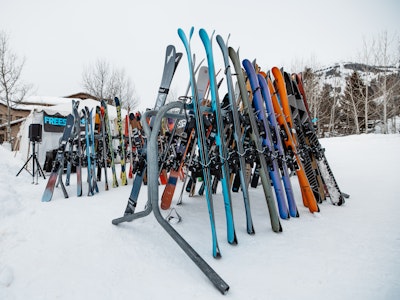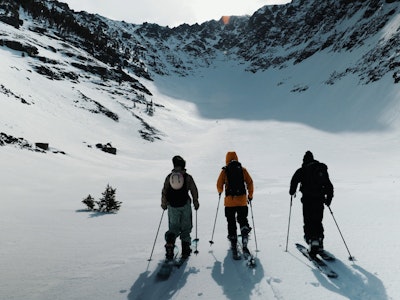Searching for White Gold
This article originally appeared in the November 2010 issue of Freeskier Magazine. For more from this issue make sure to pick up a copy at your local newsstand.
Words: Dan Treadway, Photos: Bryn Hughes
Since Alaska was discovered, people have come here in search of something. At first it was furs, then gold, fish, timber, oil and solitude. The pioneers risked everything for the reward of riches and exploration. As the license plate reads, Alaska is still "The Last Frontier." You can"™t get the feeling of what people went through to discover this place by jumping on a jet and staying in a heli lodge. Rather, you need to make the journey by land and feel what it"™s like to rely on no one but yourself and your travel partners to make it. Even at this, we can never really experience what the early pioneers risked for the reward.
It all started at the Cheeseburger Gala hosted by the Whistler Troutsmen. Dan and I were talking and he suggested that we go on a ski trip together. I have always looked up to Dan and I was obviously interested in making that happen. A few weeks later I got a call from Bryn asking me if I would be interested in going to Alaska with Dan and him. It wasn"™t a real brain buster to figure out my answer; I obviously said yes. I was a little past excited." "” Josh Bibby
In March, I packed my truck with photographer Bryn Hughes and fellow skier Josh Bibby, our three Skidoos, fuel cans, oil, skis and gear until there was room for nothing else, and pinned it north from Whistler. We took the coastal route, called the Gold Rush Trail. Like the prospectors who battled their way up here before us in the early 1800s, we were looking for treasure. But instead of looking within the mountains, our focus was on top: our white gold. And preferably the fluffy kind.
Stewart, BC, and Hyder, AK, were our first stops on the journey. These places were so gold crazy in the 1800s that they dug a 20 km tunnel under the glacier to access a prospering mine. Like a lot of the miners back then, we came up empty handed. Freezing levels had gone through the roof, turning the four feet of pure gold that had fallen the week before into thick porridge. After a fun round of cleaning the howitzer that helps protect the Stewart Cassiar Highway from avalanches, we headed north. Way north.
Once you turn north at Kitwanga junction you feel like you"™re on a true exploration. Gas stations are rare, so you only have enough fuel to make it from one to the next, and just because the map says there"™s a town doesn"™t mean that there will be. There are only four gas stations, one town with a motel and restaurant, and one heli lodge on one particular stretch of highway that lasts over 700 kms. It"™s two long days on the road with nothing blurring by the windows but wilderness. We only had one mechanical blemish along the way, and that was due to photographer error of not fueling when the truck was half full. Luckily, we had gas in the sleds, and after getting fuel all over my face and body, we got enough out to get the truck to the next service station. With a beautiful alpenglow to welcome us in, we pulled onto Thompson pass near Valdez. From the looks of things, we had finally found our gold.
Valdez is a well-established ski town. People have been heliskiing and climbing peaks here since before I was born. The one aspect that hasn"™t really been explored is sled skiing. By this I mean driving to the top of the run, or at least really close to it, and skiing back to your sled. You really feel like you"™re pioneering when you do it this way, as you rely on your skills and equipment and nothing and no one else.
On the first day in Valdez, we were rewarded for the long drive with clear blue skies. We headed off to Thompson pass, which is about 30 miles inland, where Tailgate Alaska was in full force. It"™s an event organized to bring together skiers, snowboarders and sledders in one of the most amazing mountain locations in the world. There were over 200 people signed in to take part in cheap heli runs, sled shuttles, beer gardens, ping pong tables, warming tents and parking for over 40 RVs. There were Olympic snowboarders, some of the world"™s best big-mountain and freestyle snowboarders, some legend shredders, some of the worlds best snowmobilers and a handful of skiers, all here to play in the mountains and drink as much free beer as possible. We had no problem accomplishing both!
Our plan was to stay for a week and then move on to Haines, but the weather turned out to be too good to leave. In 11 days, we only had a day and a half of bad weather, and during that time the snow gods blessed us with an extra 10 inches of blower. We explored new zones where the heli ski guides kept telling us they had never before seen snowmobile tracks before. The days were long, with the sun only going down at 9:30 pm, letting us put many miles behind us in search of the perfect sled and ski terrain. I"™ve been skiing off my sled for over 10 years and never before have I been able to ski this amount of vert from ghost rides.
If you"™re not familiar with the term "Ghost Ride," it"™s fairly self-explanatory. Ride up, get the sled stuck on purpose, pull the skis off, turn the sled around, give it a push and hope for the best. There were times where we skied 1,200-foot spines as fast as the sled got to the bottom. If we pushed it, we could get a run in every five minutes. That is, if Bibby wasn"™t getting run over by his sled or stuck in the climb.
Sled skiing isn"™t for the weak of heart, and it takes a lot of time to get comfortable. But by the end of our tour, Bibby had gone from being a green circle sledder to a double black ripper. Bryn has all kinds of time on his sled but simple stucks and the photo gear junkshow has earned him his new nickname, "Tourettes."
Alaska is perfect for sled skiing, there are unlimited ghost rides. If you can ride your sled up and stop it at the top of your high mark first try (like Dan) you can get tons of runs in. Or if you can get someone to drop off your skis then high mark, jump off and ghost your sled (like Dan), that works too. Like the rest of Alaska, the learning curve for sled skiing is steep. Especially after you roll your sled down a high mark once or twice, get it stuck, and then when you finally get back down you"™re told, ‘Well you only gave it half a try.’ So you start your sled and get ready to blast it again and Dan says, ‘Oh, so now you"™re just gonna go and get in my way, are ya?’ Steep learning curve. It worked for me though; Dan kept giving me tips and words of encouragement and I learned a lot." "” Josh Bibby
With the sun still pounding us from above, we gambled and got back on the road to head to Haines. By the time we pulled into Haines, we had logged over 5,000 kms on the road, and it felt like the truck and trailer were only touching the ground for a small portion of that time, as some of the frost heaves are so big that the centerline disappeared from site as we drove.
We were greeted with another alpenglow as we drove through Haines summit. This place looks even more mind-blowing than Thompson pass. We rolled up to the US border (as we went back through Canada to get to Haines), scared as usual that the US wouldn"™t let us in. Luckily, the border guard spent half an hour asking us questions about how good the sledding and skiing had been. By the end of our conversation, he hadn"™t asked us anything regarding customs, but had given us all the local beta on where to ride. I headed to the bar to confirm our riding spot. The atmosphere at the bar is like it would have been in the old days when a huge deposit of gold was discovered. People were buying rounds, singing and yelling stories of how amazing it is in the mountains.
This place doesn"™t look like anywhere on Earth, with massive hanging glaciers, spines and pillows hanging everywhere. The snow was as good as it gets. Day after day, the weather board at SEABA Heliskiing read: "Bluebird with widespread blower!" The sled access isn"™t as easy as in Valdez, but the reward is worth the work. The main zone we rode has a couple river crossings that almost claimed a couple sleds in the deep, fast flowing sections. On our last day, we finally had our first mechanical: Bibby"™s clutch blew up. I think both Bryn and I were kind of jealous, as we were super kicked in and could do with a day of cruising town. We had been on the road for 20 days, four of which had been strictly travel, two down days and 14 days of sunrise to sunset riding. Just to finish off the tour in true AK fashion, Tom Wayes took us out to blast off 300 rounds from his AR-15 Assault rifle before boarding the ferry back to British Columbia, via Washington.
Click the photo above to launch the entire White Gold gallery.
The breathtaking 975-mile ferry ride to Bellingham took us through the inside pas- sage. This is the same route that miners and explorers have taken over the years. This is the topping on the cake, being able to sit back and enjoy the miles of wild coastline, most of it looking the exact same as when it was first discovered by the white man. It"™s one of the most amazing things about water and snow: No matter how many people have been there before you, it feels like you"™re the first one. And that"™s what keeps me coming back.For more of the December Issue of Freeskier. Click the Cover!
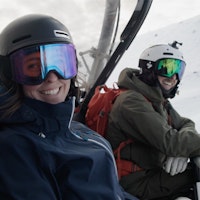
![[GIVEAWAY] Win a Head-to-Toe Ski Setup from IFSA](https://www.datocms-assets.com/163516/1765920344-ifsa.jpg?w=200&h=200&fit=crop)
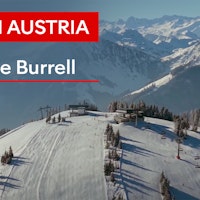
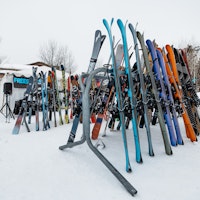
![[GIVEAWAY] Win a Legendary Ski Trip with Icelantic's Road to the Rocks](https://www.datocms-assets.com/163516/1765233064-r2r26_freeskier_leaderboard1.jpg?auto=format&w=400&h=300&fit=crop&crop=faces,entropy)
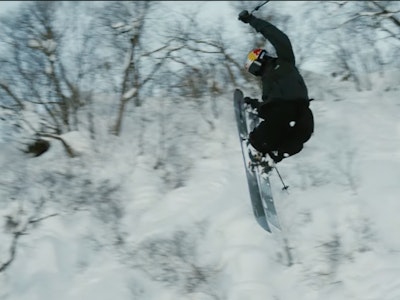

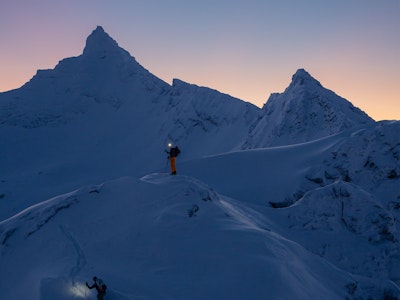
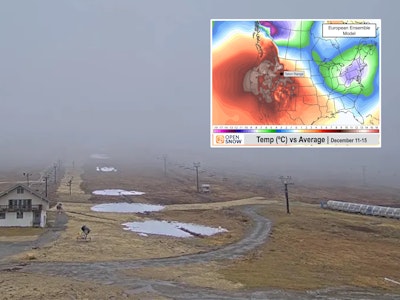
![[GIVEAWAY] Win a Head-to-Toe Ski Setup from IFSA](https://www.datocms-assets.com/163516/1765920344-ifsa.jpg?auto=format&w=400&h=300&fit=crop&crop=faces,entropy)
